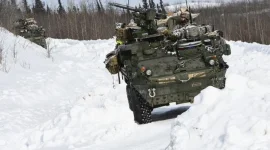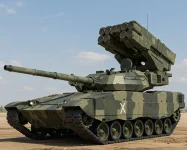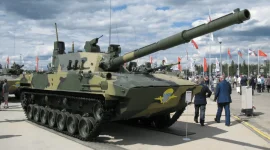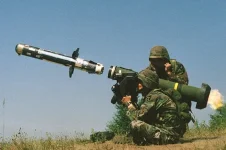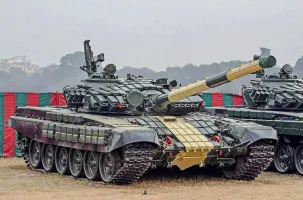- Views: 1K
- Replies: 6
In a significant step to bolster its air defence capabilities along its northern and western frontiers, the Indian Army has initiated a procurement process valued at approximately ₹30,000 crore for the indigenous ‘Anant Shastra’ mobile anti-aircraft missile system.
The tender has been issued to the state-owned enterprise Bharat Electronics Limited (BEL) for the acquisition of five to six regiments of this advanced weapon system.
This move is aimed at enhancing protection against aerial threats in sensitive high-altitude areas bordering China and Pakistan.
The ‘Anant Shastra’ system, which was formerly known as the Quick Reaction Surface-to-Air Missile (QRSAM), is a testament to India’s growing self-reliance in the defence manufacturing sector under the ‘Atmanirbhar Bharat’ (Self-Reliant India) initiative.
Developed by the Defence Research and Development Organisation (DRDO), the system is designed for high mobility and rapid engagement.
Its core strength lies in its ability to search for, track, and destroy enemy targets while on the move, and it can launch missiles after only a short halt.
This "search-and-track-on-the-move" capability makes it exceptionally suitable for the challenging terrains of Ladakh and Arunachal Pradesh.
With an effective range of about 30 kilometers, the Anant Shastra provides a crucial short-to-medium-range protective shield.
It is designed to work in concert with the Army’s existing air defence assets, such as the medium-range MRSAM and the Akash missile systems, creating a multi-layered defence network.
This integrated approach allows for a faster and more effective response against modern aerial threats, including low-flying fighter jets, helicopters, cruise missiles, and unmanned aerial vehicles (UAVs), or drones.
Each regiment of the Anant Shastra system is a comprehensive combat group, equipped with multiple launchers, advanced 360-degree coverage radars, and automated command and control posts.
This major acquisition marks a milestone for India's domestic defence industry.
By entrusting the production to BEL as the lead integrator, the project significantly reduces the nation's dependence on foreign military hardware.
Furthermore, it is expected to energise the national defence ecosystem by promoting technological growth in critical areas like radar systems and missile guidance, while also creating skilled employment opportunities. The system boasts an indigenous content of over 90%, which is planned to be increased further.
Military experts have praised the procurement as a necessary and timely measure to counter the evolving nature of aerial warfare.
The ability of the Anant Shastra to provide a mobile and agile air defence cover for advancing army columns is seen as a critical advantage in potential future conflicts.
This investment is a key component of India’s broader strategy to modernise its military and reinforce its infrastructure and surveillance capabilities along its borders, ensuring readiness and maintaining superiority in an increasingly complex security environment.

